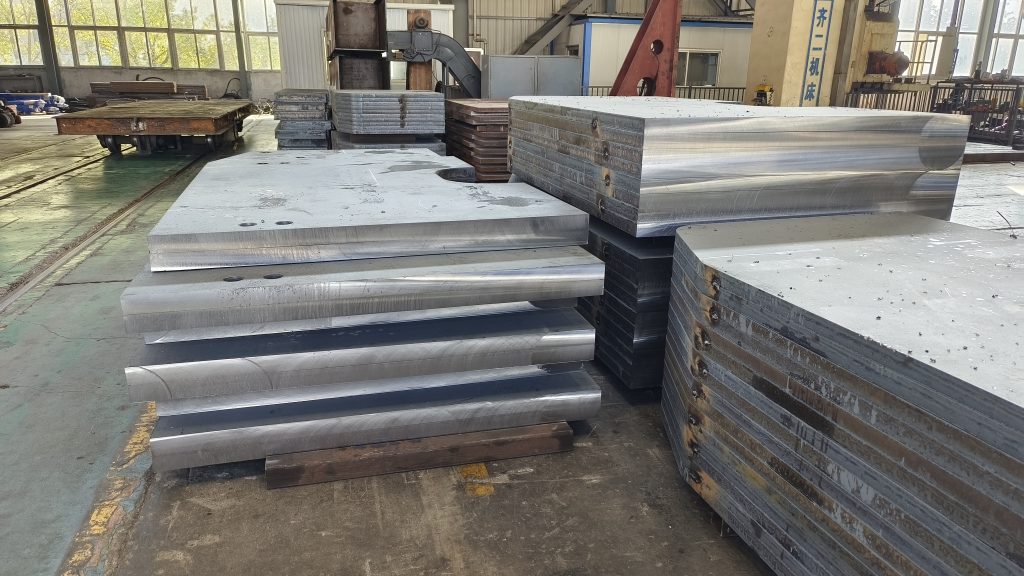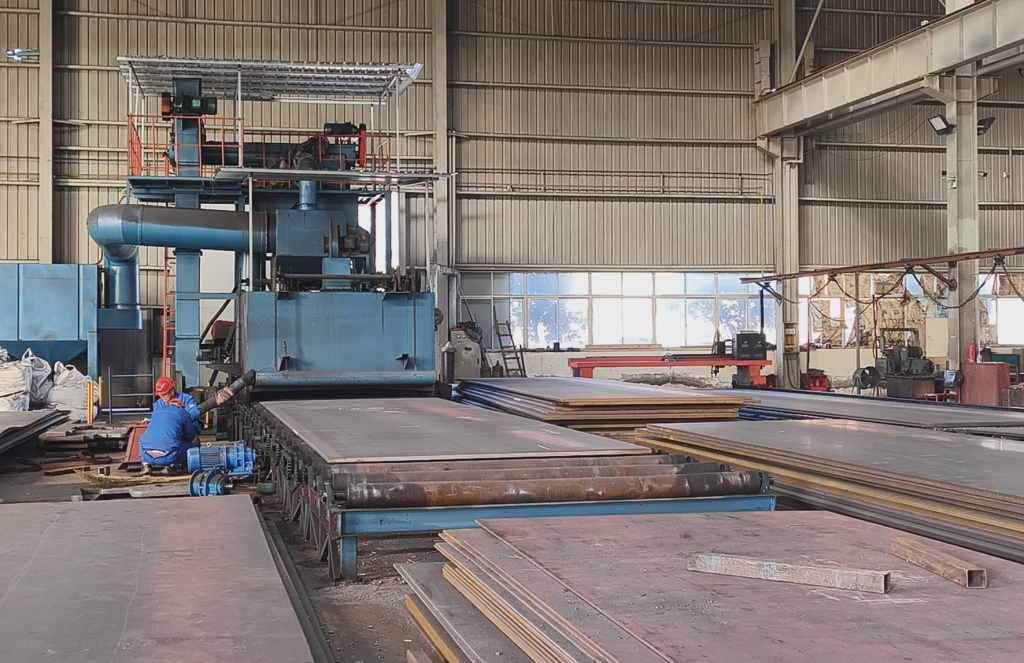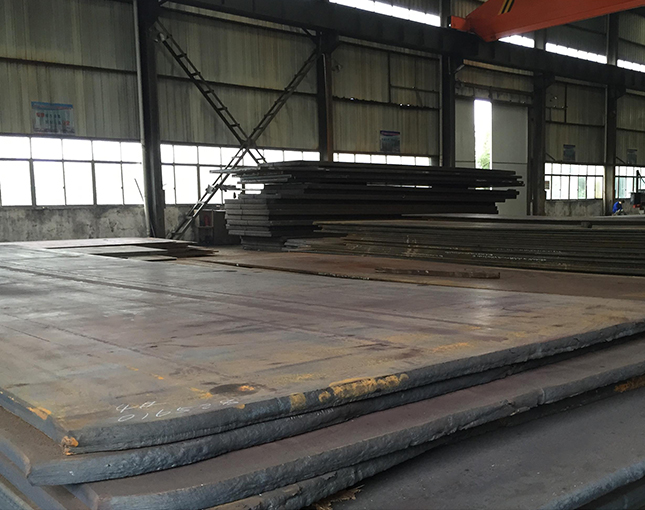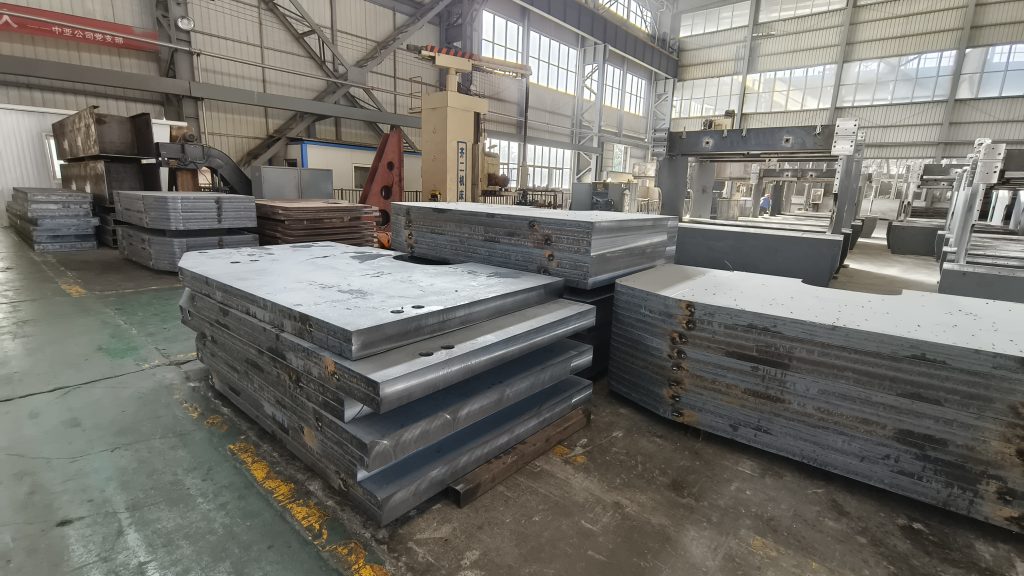Appelez-nous aujourd'hui!+86 18055583040|admin@zymtcnc.com

Appelez-nous aujourd'hui!+86 18055583040|admin@zymtcnc.com

Bending machine steel plate plays a vital role in the operation of the bending machine. The following is a manifestation of its importance:
1. Structural support
Bending machine steel plate provides stable structural support for the equipment. It can withstand huge pressure and stress to ensure that the bending machine will not be deformed or damaged during operation. High-quality steel plates have sufficient strength and rigidity to ensure the accuracy and stability of the bending machine, so that the processed workpiece size is accurate and the shape is regular.
2. Accuracy assurance
1. Flatness: High-quality bending machine steel plates have good flatness, which is crucial to ensure the bending accuracy of the workpiece. If the flatness of the steel plate is not good, it will cause uneven deformation of the workpiece during the bending process, affecting the product quality.
2. Dimensional accuracy: The dimensional accuracy of the steel plate directly affects the processing accuracy of the bending machine. Accurate steel plate size can ensure that the mold installation position of the bending machine is accurate, thereby ensuring that the bending angle and size of the workpiece meet the requirements.
3. Wear resistance
During the operation of the bending machine, the steel plate will be constantly rubbed and impacted by the mold. Steel plates with good wear resistance can extend the service life of the bending machine and reduce the maintenance cost of the equipment. At the same time, steel plates with good wear resistance can also maintain the flatness and precision of their surface, ensuring long-term and stable processing quality.
4. Corrosion resistance
In some special working environments, the bending machine may be exposed to corrosive media. At this time, corrosion-resistant steel plates are particularly important. It can prevent the steel plate from rusting and corroding, ensuring the normal operation of the bending machine and the quality of the workpiece.
5. Safety guarantee
Reliable bending machine steel plates can withstand various stresses during the working process and reduce the risk of equipment failure. This is crucial for the safety of operators. If the steel plate is of poor quality, it may break or be damaged during the working process, leading to serious safety accidents.
In summary, bending machine steel plates are of irreplaceable importance in the operation of bending machines. Choosing high-quality steel plates can improve the processing accuracy, stability and service life of the bending machine, while also ensuring the safety of operators.

I. Cuttability
1. Easy to cut: The steel plate should be able to be easily cut using various cutting tools, such as flame cutting, plasma cutting, laser cutting, etc. During the cutting process, it should have good cutting quality, neat incisions, and no obvious burrs.
2. Cutting accuracy: Ensure the accuracy of the cutting size to meet the accuracy requirements of the parts processed by the bending machine. The dimensional deviation after cutting should be controlled within a small range to avoid problems in subsequent bending processing due to cutting errors.
II. Weldability
1. Good welding performance: The steel plate should be able to be reliably welded to other parts. During the welding process, it should have good fusion and welding strength to ensure the quality of the welded joint.
2. Small welding deformation: Minimize the deformation generated during the welding process to ensure that the size and shape of the steel plate after welding meet the requirements. Welding deformation can be controlled by selecting appropriate welding processes and welding parameters.
III. Bendability
1. Good plasticity: The steel plate needs to have sufficient plasticity during the bending process to withstand bending stress without breaking. Good plasticity can ensure that the parts after bending have a smooth surface and accurate angle.
2. Low rebound: The steel plate after bending should have a low rebound amount to ensure the dimensional accuracy of the parts. The rebound can be controlled by selecting a suitable bending mold and bending process.
IV. Surface quality
1. Smoothness: The surface of the steel plate should have a certain smoothness to reduce the wear of the mold during the bending process. At the same time, the smooth surface also helps to improve the appearance quality of the parts.
2. No defects: The surface of the steel plate should be free of obvious scratches, pits, cracks and other defects to avoid affecting the quality of the bending process and the strength of the parts.
V. Machinability
1. Easy to process: The steel plate should be able to easily perform mechanical processing operations such as drilling, tapping, and milling. During the processing process, it should have good processing performance, small tool wear, and high processing efficiency.
2. Dimensional stability: The processed steel plate should have good dimensional stability to avoid affecting the assembly and use performance of the parts due to dimensional changes during subsequent use.

I. Parts use requirements
1.Strength requirements
1. If the parts need to bear large loads or stresses, materials with higher strength should be selected, such as medium carbon steel, high carbon steel or stainless steel. For example, the support parts and transmission parts in the mechanical structure need to have sufficient strength to ensure that they will not deform or break during operation.
2. For parts with low strength requirements, such as some decorative parts or light structural parts, low carbon steel or aluminum alloy can be selected. Although the strength of these materials is relatively low, they are sufficient to meet general use requirements, and they also have the advantages of light weight and easy processing.
II.Corrosion resistance requirements
1. If the parts will be used in a humid and corrosive environment, such as chemical equipment, marine engineering, etc., materials with good corrosion resistance, such as stainless steel or aluminum alloy, should be selected. Stainless steel has excellent corrosion resistance and can resist the erosion of most chemical substances; aluminum alloy also has certain corrosion resistance and is light in weight, which is suitable for some occasions with weight requirements.
2. For parts used in ordinary environments, you can choose materials such as low carbon steel or medium carbon steel, which have relatively low costs and good processing performance.
III.Appearance requirements
1. If the parts have high requirements for appearance, such as some high-end furniture, electrical appliance housings, etc., you should choose materials with good surface quality and easy surface treatment. Stainless steel and aluminum alloys both have good surface quality, and can obtain beautiful appearance through polishing, spraying, etc. Low carbon steel can also improve its appearance quality through surface treatment, but it is relatively difficult to process.
2. Processing technology requirements
1.Bending performance
1. Different materials have different bending performances, and the appropriate material should be selected according to the performance and processing requirements of the bending machine. Generally speaking, low carbon steel and aluminum alloy have good bending performance and are easy to bend; medium carbon steel and high carbon steel have relatively poor bending performance, requiring greater bending force and higher mold precision. Stainless steel also has poor bending performance, and is prone to cracks and creases during the bending process, requiring special bending processes and molds.
2. When selecting materials, factors such as bending angle and bending radius should also be considered. Some materials are prone to cracks or deformation when the bending angle is large or the bending radius is small, and should be selected according to specific processing requirements.
2.Welding performance
1. If the parts need to be welded, materials with good welding performance should be selected. Low carbon steel and medium carbon steel have good welding performance and can be welded by various welding methods; high carbon steel and stainless steel have relatively poor welding performance and require special welding processes and welding rods. Aluminum alloys also have good welding performance, but special aluminum alloy welding equipment and technology are required.
2. When selecting materials, factors such as strength and corrosion resistance after welding should also be considered. Some materials may experience a decrease in strength or corrosion resistance after welding, and should be selected according to specific use requirements.
3.Cutting performance
1. If the parts need to be cut, materials with good cutting performance should be selected. Generally speaking, low carbon steel and medium carbon steel have good cutting performance and are easy to cut; high carbon steel and stainless steel have relatively poor cutting performance and require special cutting tools and cutting parameters. Aluminum alloy also has good cutting performance, but due to its low hardness, it is easy to produce sticking phenomenon, and appropriate cutting fluid and cutting tools are required.
III. Cost factors
1. Material price
1. The price difference of different materials is large, and the appropriate material should be selected according to the budget. Generally speaking, the price of low carbon steel and aluminum alloy is relatively low, the price of medium carbon steel and high carbon steel is moderate, and the price of stainless steel is high. When selecting materials, factors such as material price and processing cost should be considered comprehensively to select the most cost-effective material.
2. Processing cost
1. The processing difficulty and cost of different materials are also different. Generally speaking, the processing difficulty of low carbon steel and aluminum alloy is relatively low, and the processing cost is relatively low; the processing difficulty of medium carbon steel and high carbon steel is relatively high, requiring higher processing precision and equipment requirements, and the processing cost is relatively high. The processing difficulty of stainless steel is also relatively high, and special processing technology and cutting tools are required, and the processing cost is relatively high.
2. When choosing materials, factors such as processing cost and production efficiency should be considered to select the most suitable material.

The following are some common bending machine steel plate materials recommended:
1. Low carbon steel:
Characteristics: Usually the carbon content is less than 0.25%, the strength is low, and the plasticity and weldability are good.
Model: Such as Q195, Q215, Q235, Q255 and Q275, etc.
Advantages: Relatively low price, easy to process and shape, suitable for bending parts with low strength requirements and complex shapes.
Application: Widely used in general sheet metal processing, building structural parts, light industrial products, etc.
2. Medium carbon steel:
Characteristics: The carbon content is between 0.25% and 0.6%, with higher strength, but the plasticity and weldability are worse than low carbon steel.
Model: Common ones are 40#, 45# steel, etc.
Advantages: After proper heat treatment (such as quenching and tempering), it can obtain higher strength and hardness, which can meet the requirements of some bending parts with certain strength and wear resistance.
Use: Commonly used in the manufacture of mechanical parts, such as gears, shafts, etc., and can also be used for bending some structural parts that require a certain load-bearing capacity.
3. High carbon steel:
Characteristics: The carbon content is greater than 0.6%, the plasticity and weldability are very poor, but it has high strength and hardness after heat treatment.
Model: For example, 70#, 65Mn, 82B, etc.
Advantages: Suitable for bending parts with extremely high strength and hardness requirements, such as knives, springs, etc.
Application: Used in specific occasions with high strength and high wear resistance requirements, but due to the difficulty of processing, special processing technology and equipment are usually required.
4. Stainless steel:
Characteristics: Commonly used are SUS201, SUS304, SUS316, 1Cr17, etc. It has good corrosion resistance and high strength.
Advantages: Suitable for bending parts that are used in humid environments or outdoors and have high requirements for appearance. Because no surface treatment is required, good appearance and rust resistance can be maintained.
Disadvantages: Stainless steel is prone to scratches and creases on the surface when bending, and the difficulty is relatively large, and the bending process and equipment requirements are high.
Application: Widely used in chemical equipment, food machinery, medical equipment, architectural decoration and other fields.
5. Aluminum alloy:
Characteristics: low density, light weight, good electrical conductivity, thermal conductivity and corrosion resistance, relatively low strength, good plasticity.
Advantages: Suitable for bending parts with strict weight requirements, such as parts and components in the aerospace field, electronic equipment housings, etc. It is relatively easy to form during processing, which can reduce processing difficulty and cost.
Disadvantages: The strength is not as good as some steels, and it may not be applicable in some occasions with extremely high strength requirements.
Application: Aerospace, automobile manufacturing, electronic communications and other industries.
In short, when choosing the material of the bending machine steel plate, it is necessary to comprehensively consider the use requirements, processing technology, cost and other factors of the parts. If you have high requirements for the strength and hardness of the parts, you can choose medium carbon steel, high carbon steel or stainless steel; if you have requirements for weight, aluminum alloy is a good choice; if you pursue the convenience and cost advantage of processing, low carbon steel may be more suitable. At the same time, the most suitable material should be determined according to the specific bending process and equipment conditions. When selecting materials, you should analyze and compare according to the specific situation and choose the most suitable material to ensure the quality and performance of the parts. Anhui ZYMT CNC Machine Tool Co., Ltd. has more than 20 years of experience in bending machine manufacturing. It is a reliable company famous for bending machines. Our bending machines are of excellent quality and reasonable price. It will be a good choice for you! If you are interested in bending machines, you can browse our products and contact us at any time. We will provide excellent and timely service to answer your questions.